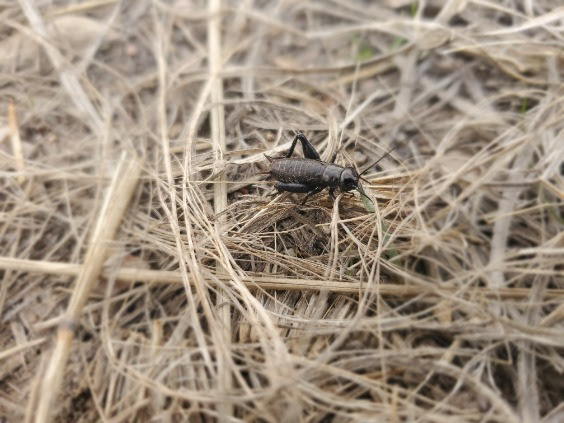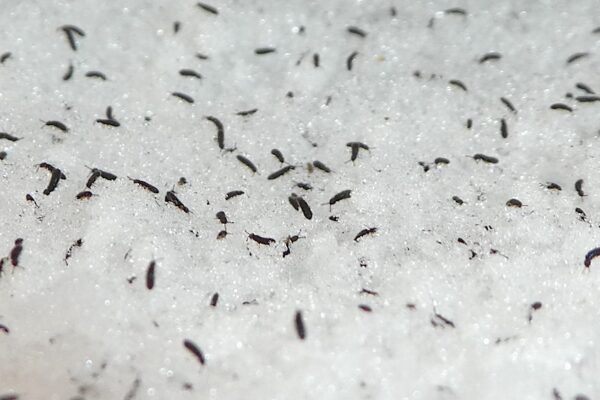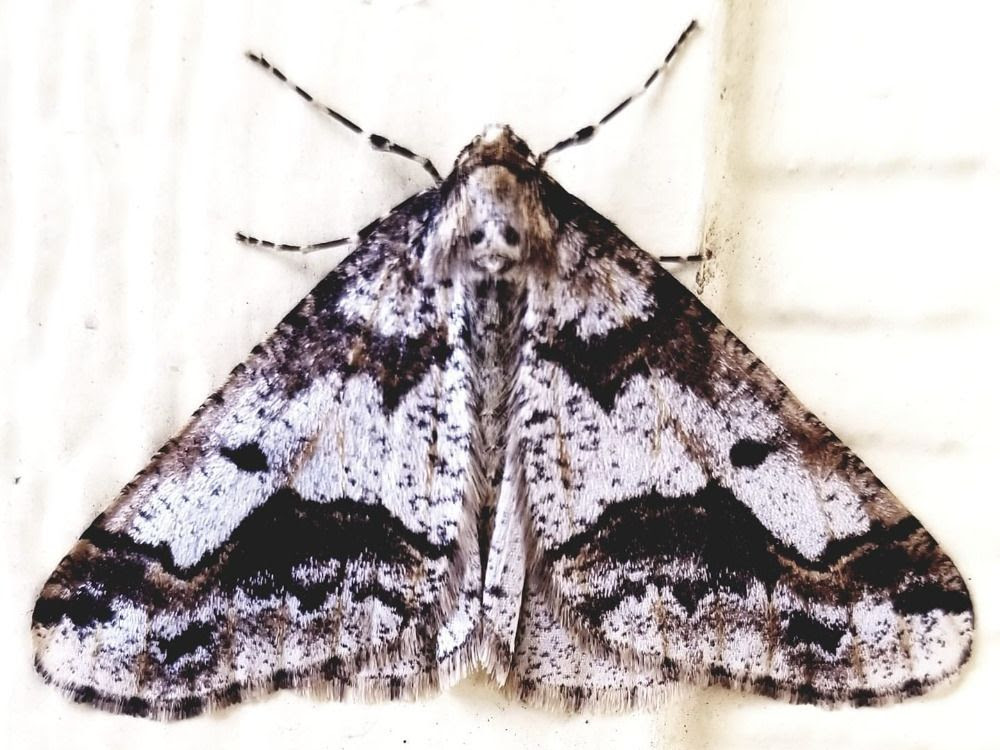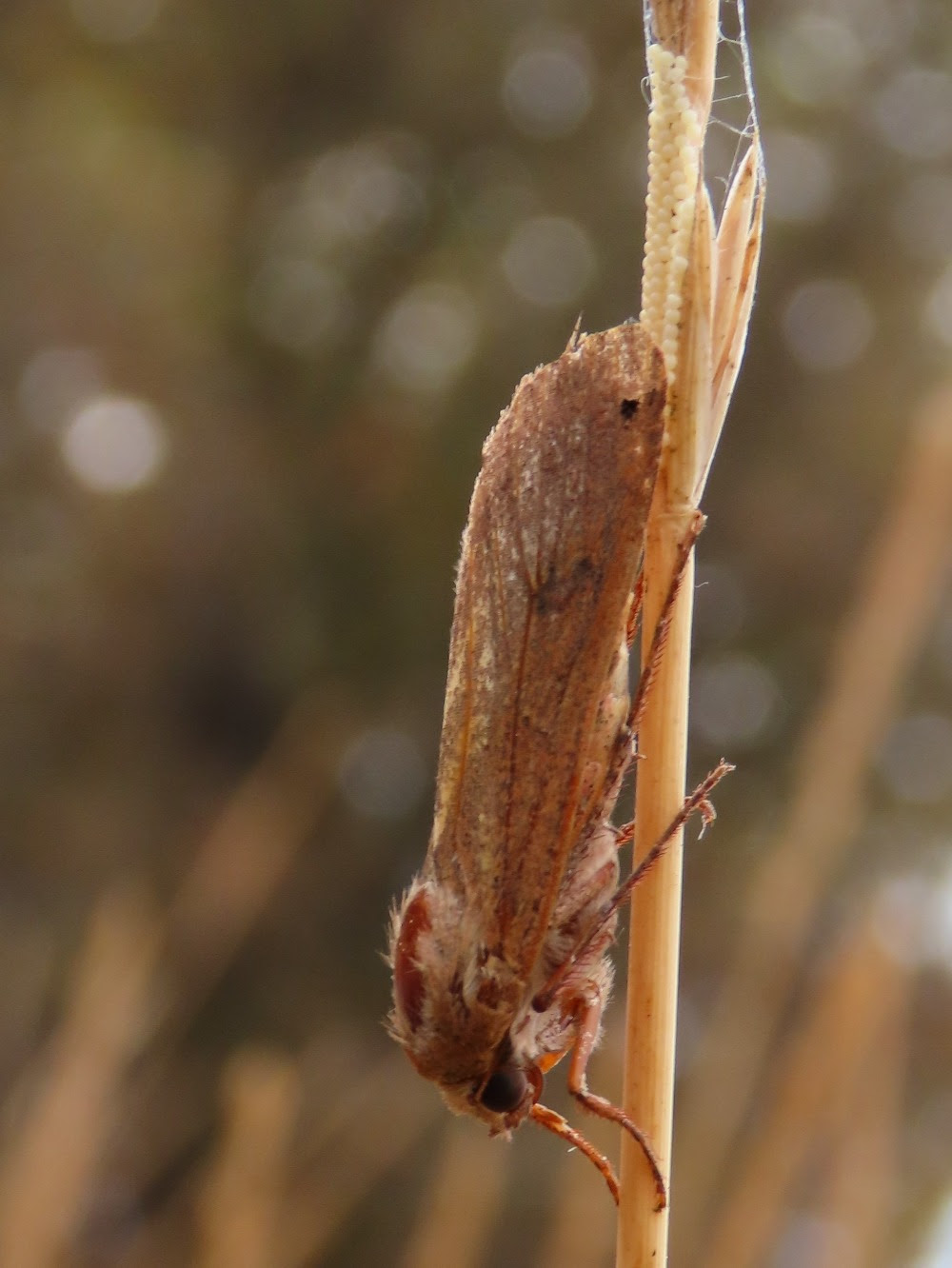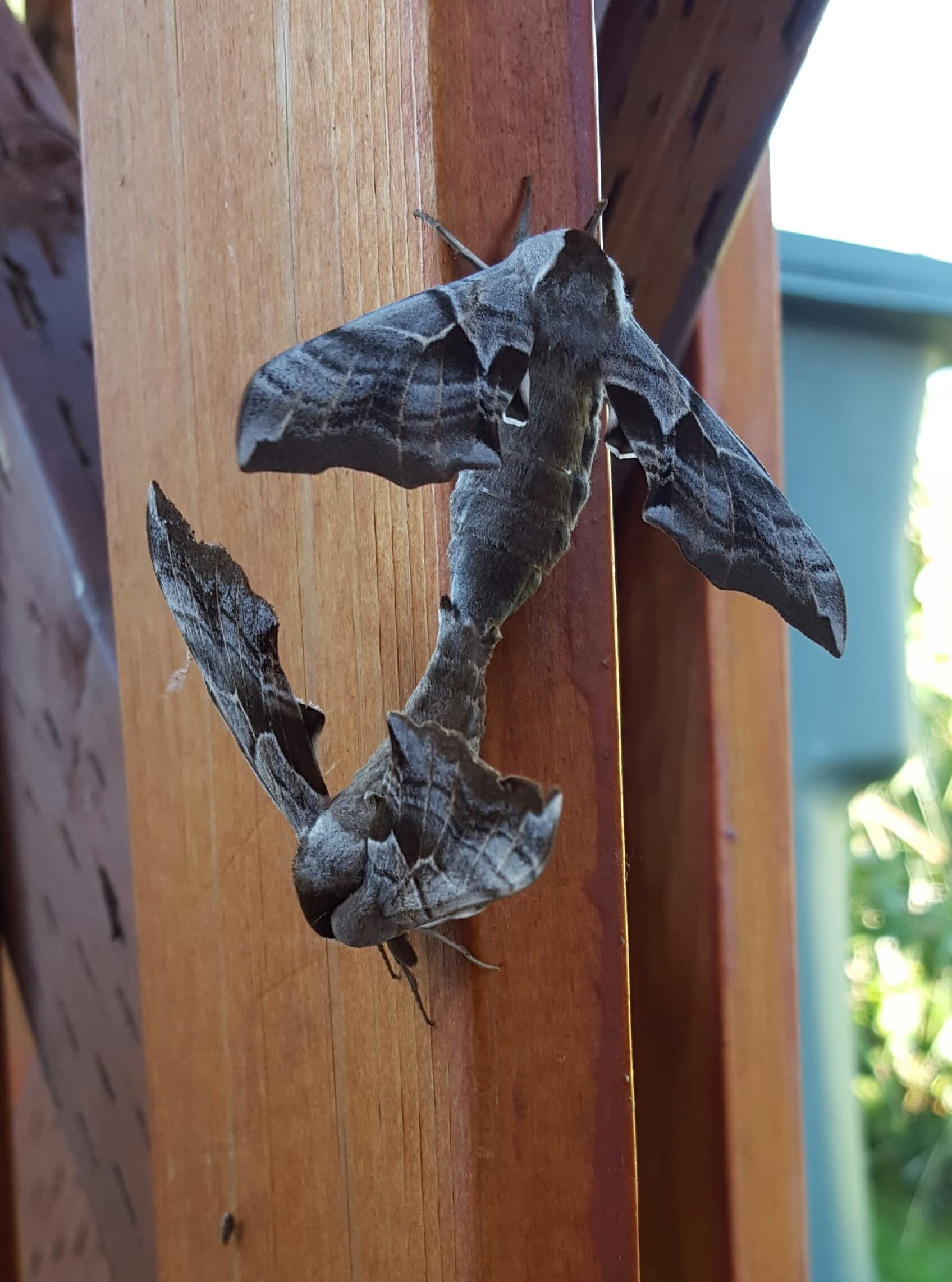After overwintering as nymphs, spring field crickets are on the move again in fields, vacant lots, and other weedy grassy areas. They are the most common large black cricket with […]
Read MoreWhat’s Buzzin’
What can you see around Western Montana right now?
Snow Fleas in the genus Hypogastrura
While snow fleas are active all year round, these tiny little guys are much easier to see after the snow flies, looking like someone sprinkled pepper on top of the […]
Read MoreWinter Crane Fly in the genus Trichocera
There are close to 30 species of winter crane flies in North America. Compared to some of the massive crane flies we see in flight in spring and summer, they […]
Read MoreSnow Scorpionfly in the genus Boreus, possibly Boreus californicus
Snow scorpionflies are active in winter and are most often seen crawling over the surface of the snow. Sort of resembling a dragon close up, they are small (2-7 mm), […]
Read MoreWinter Caddisfly in the genus Psychoglypha
At first glance, caddisflies look much like their closest living relatives — the moths and butterflies. How to tell the two groups (orders) apart? Zoom in on their wings and […]
Read MoreVancouver Looper (Erannis vancouverensis), male
We know this particular moth is a male because the females have no wings! Vancouver Loopers are found from northwestern British Columbia south to central California, and eastward to the nearer slopes […]
Read MoreIsabella Tiger Moth Caterpillar or Woolly Bear (Pyrrharctia isabella)
This is the iconic woolly bear that is said to predict the severity of the upcoming winter. While we support the fun and festivals that surround it, sort of like […]
Read MoreLarge Yellow Underwing (Noctua pronuba)
Kelly didn’t notice this moth’s neatly grouped eggs until after reviewing her photos; a very exciting discovery! Large Yellow Underwings are named for their bright orangish-yellow hindwings decked with a narrow, black […]
Read MoreWestern Black Widow (Latrodectus hesperus)
This female black widow is certainly beautiful …but take that red hourglass marking on her underside as a warning. While they are not aggressive (will not attack you), they will […]
Read MoreOne-eyed Sphinx Moth (Smerinthus cerisyi)
These beautiful moths can be found coast to coast in the northern United States, plus all of Canada (including the arctic) and into Alaska. Photo by Melissa Sheasley on July […]
Read More